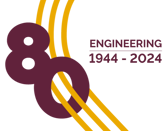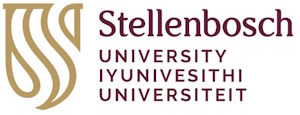
[Article by Nane Zietsman]
At the age of seven, Chris Vorster vowed to build a solar car one day. Motivated by Captain Planet and the sunny Free State, he enrolled for a degree in Mechatronic Engineering at Stellenbosch University, where he later also obtained an MEng in Electrical Engineering. Today, Chris is realising his dream as an engineer at Lightyear – a Dutch scaleup that designed the world’s first solar car. The innovative design of the Lightyear 0 includes curved solar panels on its roof, hood, and trunk, converting renewable solar energy into electric power for driving.
Chris worked on the team responsible for developing the in-wheel motors of the Lightyear 0. “The motor is a complex product and requires most engineering disciplines with a lot of interfaces and stakeholders. We developed the in-wheel motors from a set of requirements right through to the final design of the current motors with a 97% efficiency on the Lightyear 0,” explains Chris. He managed several duties throughout the process, ranging from managing suppliers, doing electromagnetic simulations, building motors and test benches, testing motors, and analysing data. According to Chris, the multi-discipline engineering subjects he was exposed to during his time at Stellenbosch University noticeably came into play during this project. “It gave me an understanding of the different interfaces and design decisions required from a mechanical, thermal, electronic and electrical engineering perspective to get an optimal overall design,” says Chris.
Currently, Chris works as the Group Lead for Engineering Internships at Lightyear. “In a South African context, the role of a Group Lead would probably be in line with an engineering manager or team lead. The role entails recruiting and supporting students for internships, research projects, thesis work, and part-time student staff. Our main goal is to set students up for career success.” Besides his passion for solar cars, empowering young engineers is a calling that relates first-hand with Chris’s own career journey: “Something I now wish I knew while I was still a student is that your degree does not by default secure you a job. It was quite disheartening to finish my studies and be unable to find employment for six months. I ended up working as a farmer for a few months before finding a position as a Control Systems Engineer,” says Chris.
Chris encourages students to make early use of opportunities such as joining or starting an engineering collective at the Faculty or doing holiday work to hone and practise their skills: “Student collectives like the Robotics Club is a fantastic way to expand and apply your knowledge. Lightyear itself stemmed from a group of students who teamed for a problem-solving challenge.” Chris adds that these experiences will also give you good technical exposure and, more importantly, teach you to take responsibility for your work- a good steppingstone for any future role.
Ending off with a word of advice, Chris says that one must be mindful of the community you surround yourself with if you want to achieve success:
“South Africa might face unique challenges, but these bring about many exciting opportunities, especially for engineers. But, keep perspective, as Nelson Mandela said: ‘may hope inspire your choices and don’t let fear form you and influence you to be apathetic and uninvolved.’ As a Stellenbosch student or alumni, you have been equipped with some world-class skills and experience to contribute greatly to society, so look out for and surround yourself with people that share a mindset of unlocking opportunities rather than letting challenges overwhelm them.”
Photographs: (left) Lightyear 0 – the world’s first solar car (photo credit: Lightyear). (right) Chris and his wife, Marizel, at the launch of the first Lightyear 0 prototype back in June 2019. In the background is the in-wheel motor.



